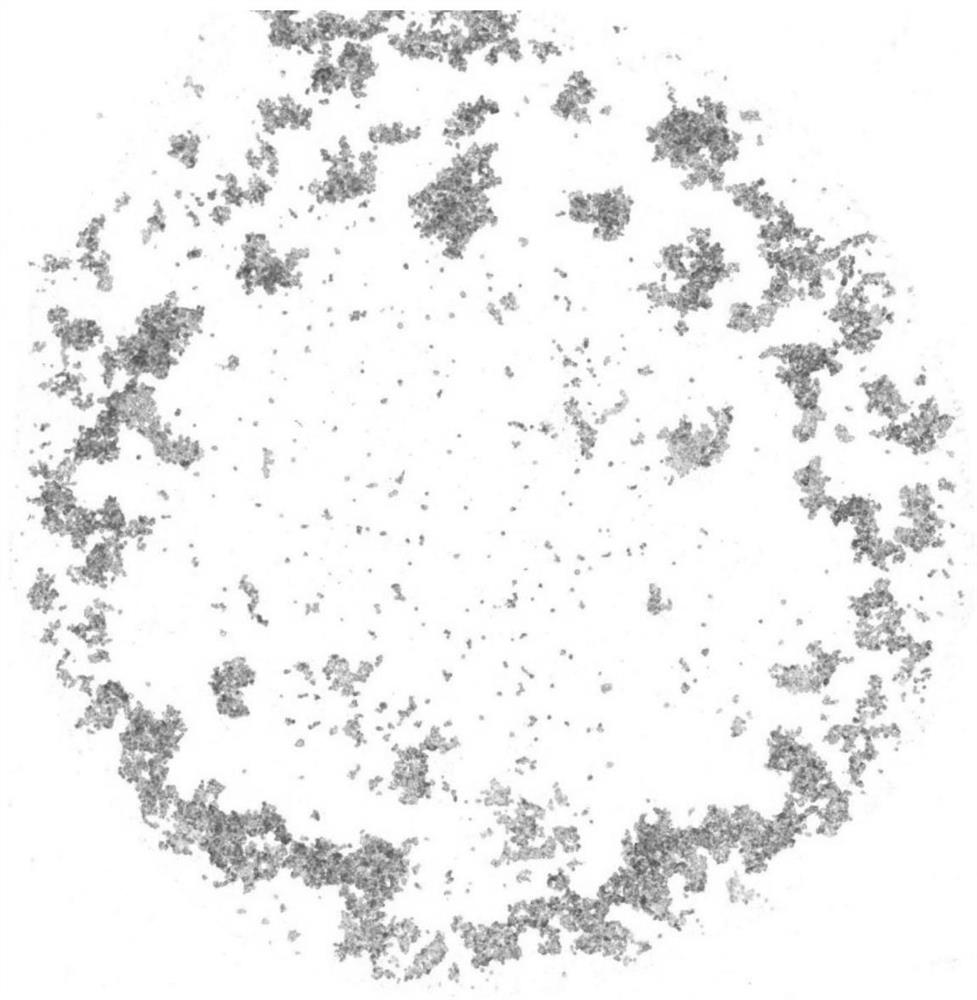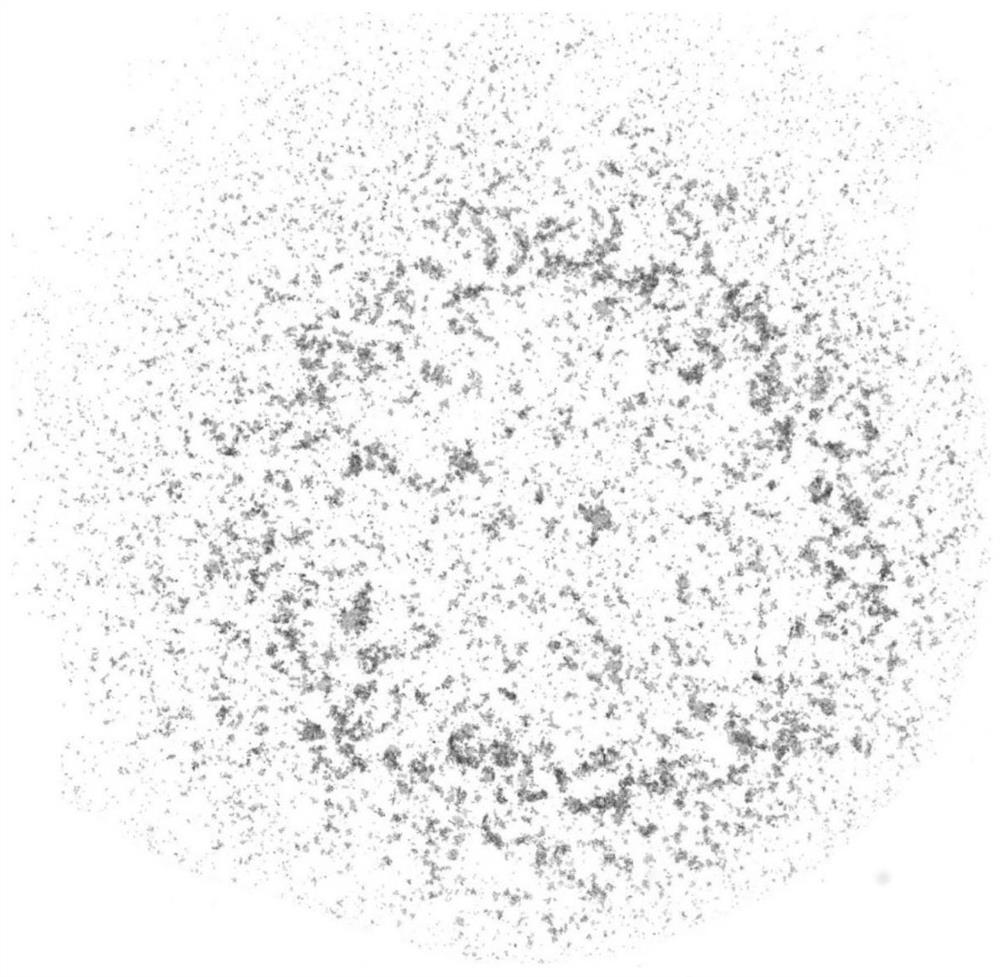Buffer solution for immunohistochemical detection quality control product as well as preparation method and application of buffer solution
A technology of immunohistochemistry and buffer solution, which is applied in application, measurement device, preservation of human or animal body, etc. It can solve the problems of tissue/cell inhomogeneity, cross-contamination, easy stacking, etc., and achieve ultra-long-term preservation and volatilization Rapid, non-diffusing effect
- Summary
- Abstract
- Description
- Claims
- Application Information
AI Technical Summary
Problems solved by technology
Method used
Image
Examples
Embodiment 1
[0062] Embodiment 1 Dissolution scheme optimization of carbomer
[0063] In order to dissolve carbomer, the inventors designed the following schemes:
[0064] Option One:
[0065] Weigh 40g of absolute ethanol and about 50g of deionized water, stir for 30sec and mix well, weigh 1g of Carbomer 940 and slowly disperse it into the ethanol and deionized water solution. Stir or shake at 120RPM on a horizontal shaker for 30min until the carbomer is fully dissolved, and it is a transparent slightly viscous liquid with bubbles. The measured pH value is 6.1. About 0.2 g of triethanolamine was added dropwise, and the pH value was adjusted to 7.2. At this time, a transparent viscous liquid with bubbles appeared. Add 10 mg of sodium azide and make up the balance with deionized water, continue to place on a horizontal shaker at 120 RPM at room temperature for overnight defoaming to form a clear and stable gel-like buffer.
[0066] Option II:
[0067] Weigh 1g of Carbomer 940 and slowly...
Embodiment 2
[0072] Example 2 Buffer for immunohistochemical detection quality control product and its preparation
[0073] To verify the performance of different buffers, prepare different buffers according to Table 1.
[0074] The content (g) and pH value of each component in the buffer solution of Table 1
[0075] buffer R1 R2 A1 A2 A3 A4 B1 B2 B3 B4 Carbomer 940 / / 0.2 / 1.0 / 0.2 / 1.0 / Carbomer 980 / / / 0.2 / 0.5 / 0.2 / 0.5 anhydrous ethanol / 35 35 35 40 40 / / / / isopropyl alcohol / / / / / / 30 30 35 35 Deionized water 100 65 margin margin margin margin margin margin margin margin Triethanolamine / / 0.1-0.2 0.1-0.2 0.1-0.2 0.1-0.2 0.1-0.2 0.1-0.2 0.1-0.2 0.1-0.2 Sodium azide / / 0.01 0.01 0.01 0.01 0.01 0.01 0.01 0.01 pH / / 7.2 7.2 7.2 7.2 7.2 7.2 7.2 7.2
[0076] The preparation methods of the above buffers are as follows: ...
Embodiment 3
[0084] Example 3 Distribution of cells in cell suspension prepared with different buffers
[0085] 1. Preparation of Cell Suspension
[0086] In each buffer prepared in Example 2, according to 10M (10×10 per mL of buffer) 6 The concentration of each) cells was added to the cells respectively, and different cell suspensions were prepared.
[0087] 2. Observation of Cell Distribution in Cell Suspension
[0088] For each cell suspension, 1 μL was dropped onto a glass slide and stained with Ki-67 antibody as the primary antibody for detection. It can be observed that the cell suspension prepared with buffer B2 does not spread after being added dropwise to the glass slide, and it only takes about 3 minutes to completely evaporate at room temperature. It is observed under a microscope that a uniform cell sheet can be formed ( figure 1 ), and the cell suspension quality control products prepared with buffers A1-A4 and B1-B4 performed basically the same; the cell suspension prepare...
PUM
 Login to View More
Login to View More Abstract
Description
Claims
Application Information
 Login to View More
Login to View More - R&D Engineer
- R&D Manager
- IP Professional
- Industry Leading Data Capabilities
- Powerful AI technology
- Patent DNA Extraction
Browse by: Latest US Patents, China's latest patents, Technical Efficacy Thesaurus, Application Domain, Technology Topic, Popular Technical Reports.
© 2024 PatSnap. All rights reserved.Legal|Privacy policy|Modern Slavery Act Transparency Statement|Sitemap|About US| Contact US: help@patsnap.com










